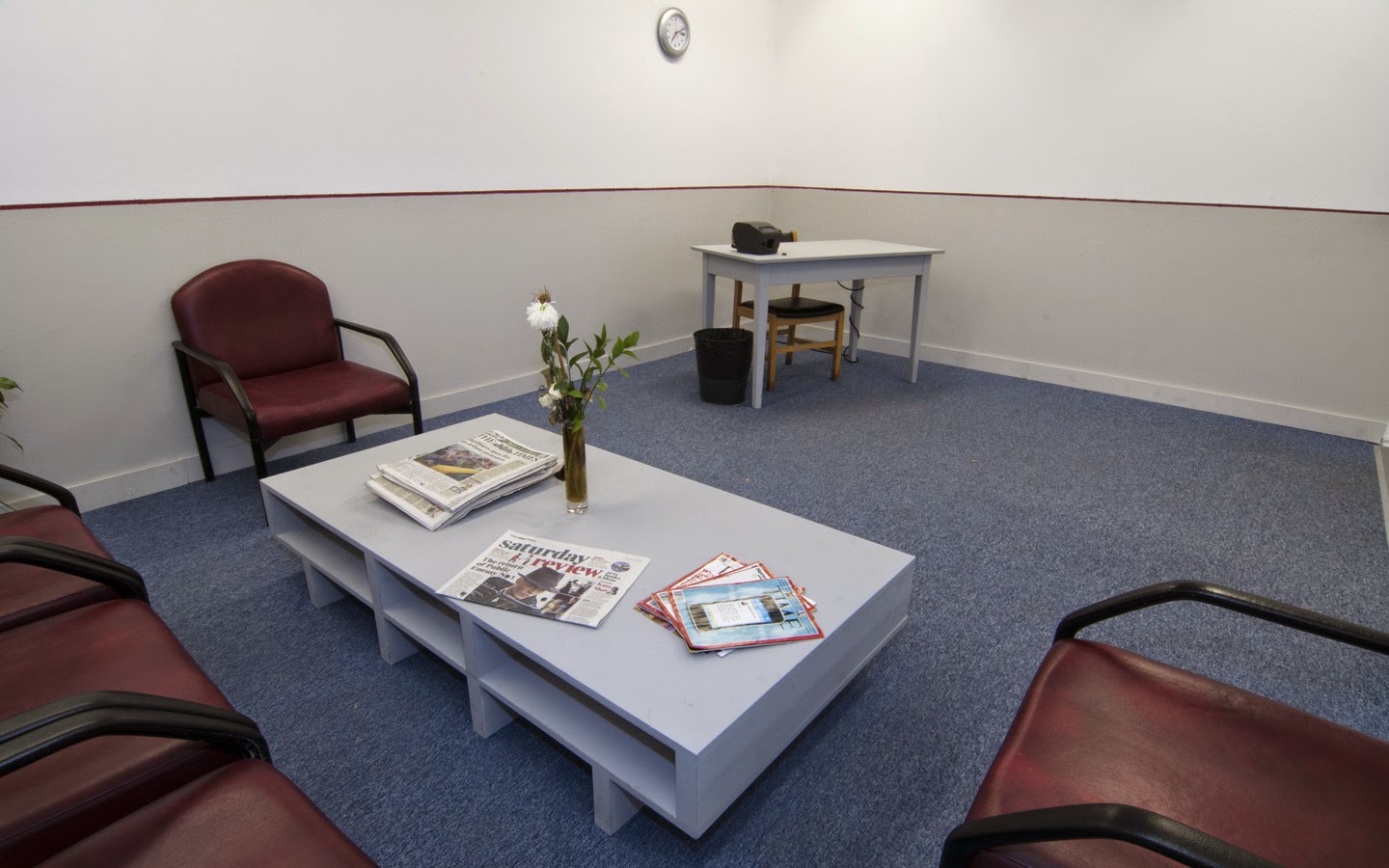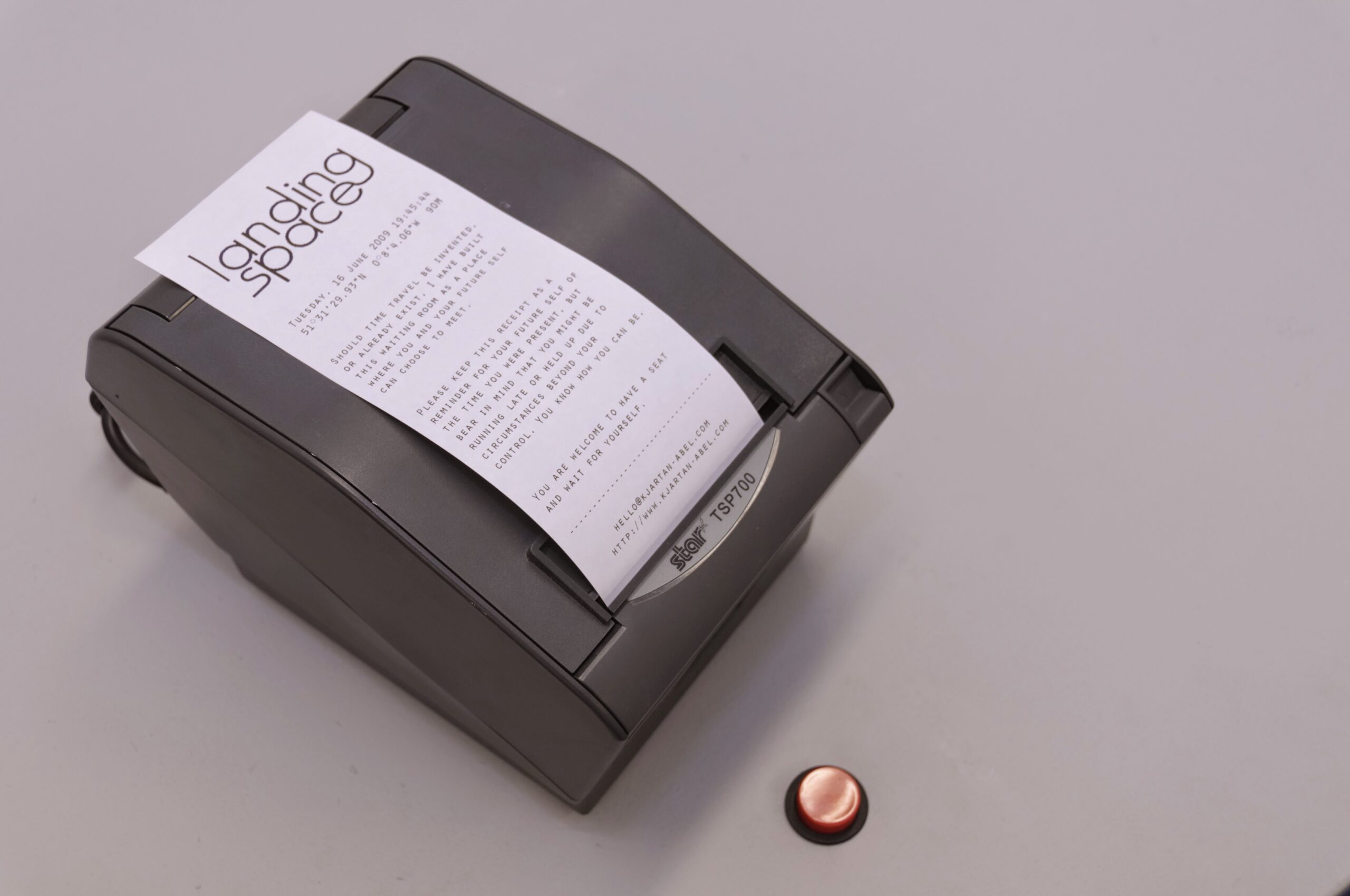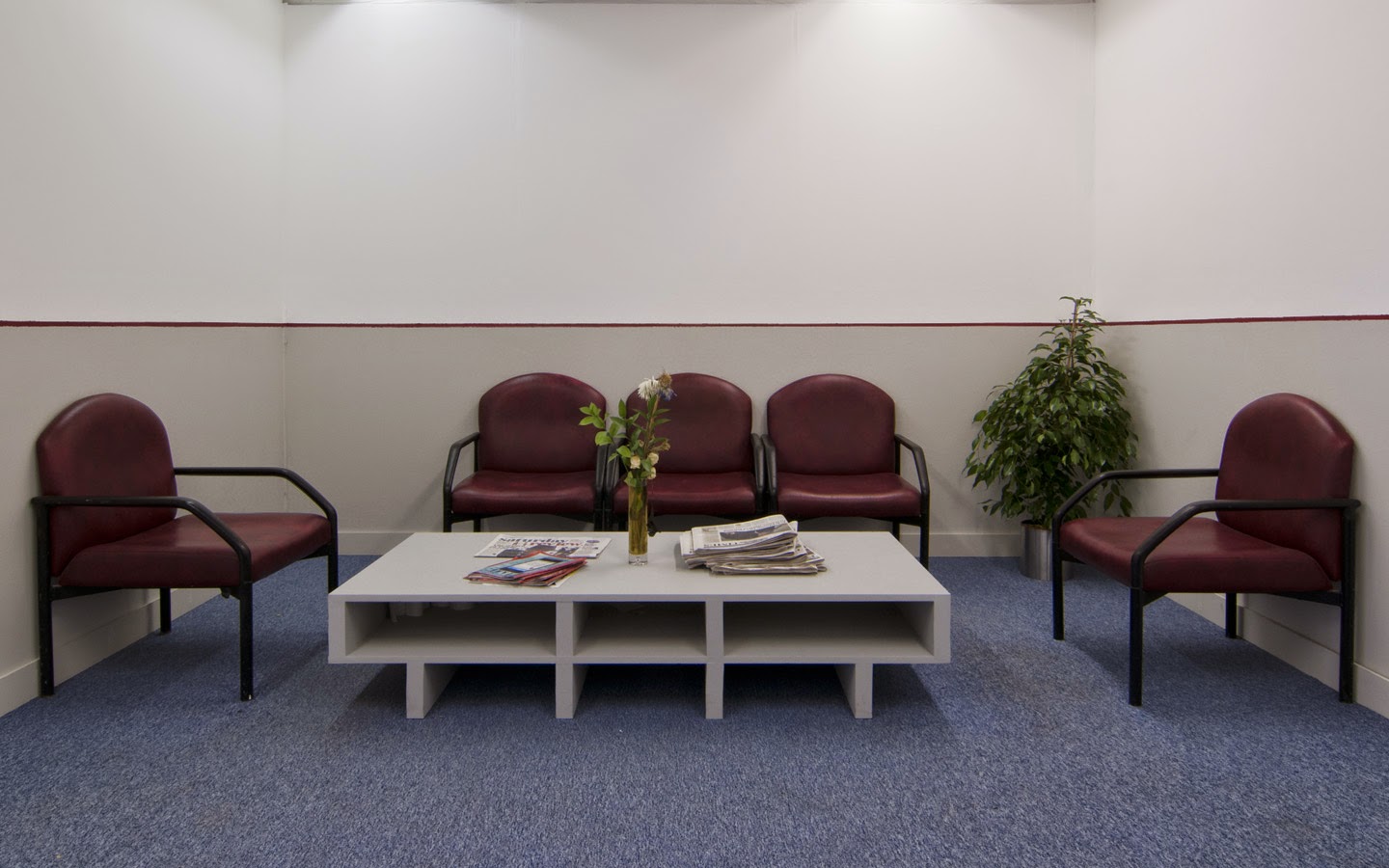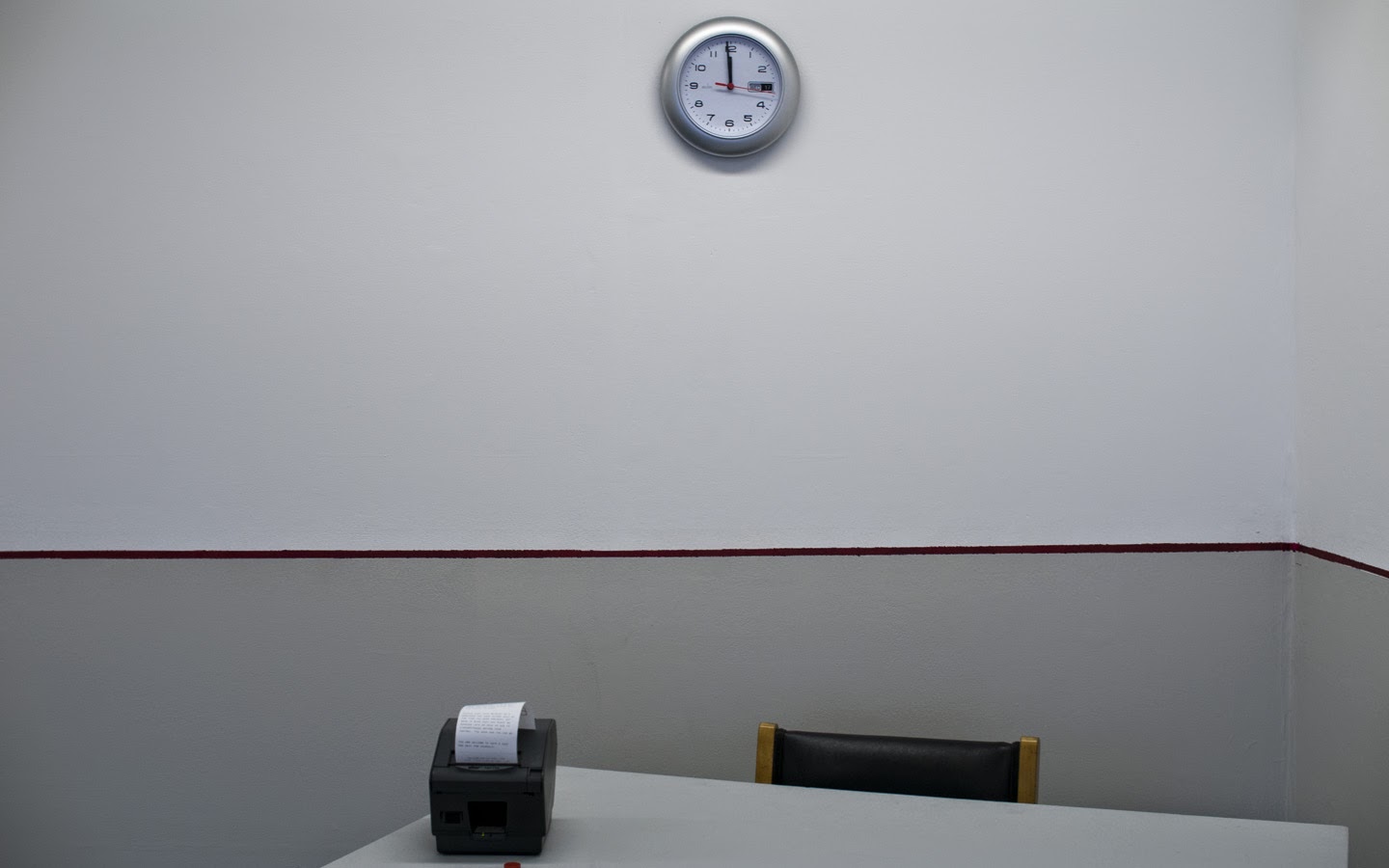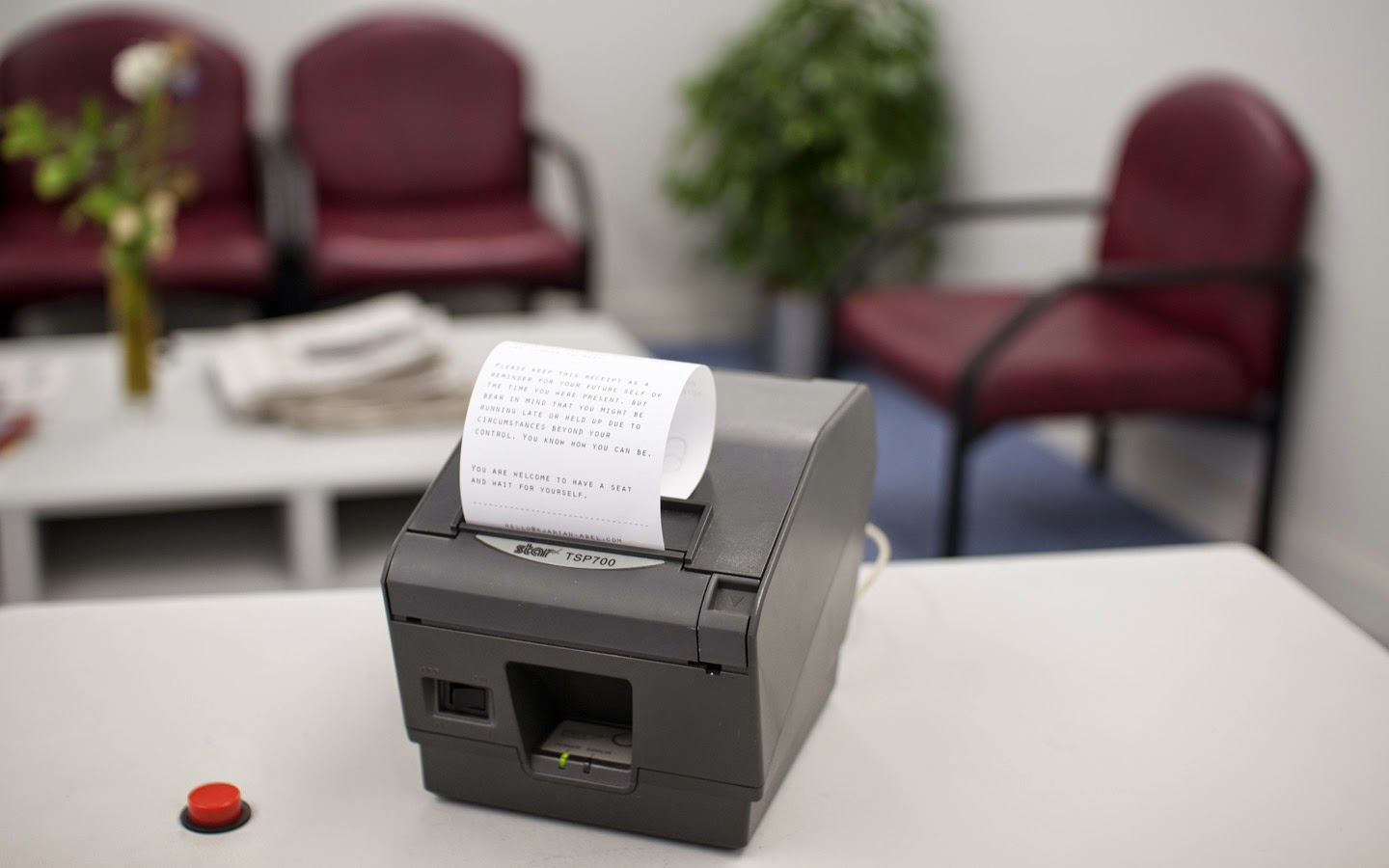This installation, conceived and exhibited in 2009 at the Slade School of Fine Art Final Degree Show, represented an artistic exploration of time, self-perception, and the often-overlooked experience of waiting, all within the seemingly mundane setting of a generic waiting area. The interactive nature of the piece invited visitors to momentarily inhabit a space that blurred the lines between the present and the potential future, prompting a contemplation of temporal possibilities.
Created at a time when interactive installations exploring temporal themes were gaining traction, “Waiting Room” utilized the familiar tropes of a waiting environment to prompt introspection. The deliberate selection of commonplace materials – including a blue carpet, two painted walls with a stark red stripe, and a collection of standard waiting room furniture such as five chairs and a simple table – aimed to create an immediately recognizable and somewhat unremarkable setting. The inclusion of details like a discarded newspaper and magazine, a ticking clock mounted on the wall, a functional trash bin, and even the subtly melancholic dead flowers in a vase, further reinforced this sense of the everyday. The presence of a desk with a chair, a red push button, a receipt machine, and a hidden computer running specialized software facilitated the dispensing of a unique memento for visitors.
The Audience Experience and the Significance of the Receipt:
The audience experience was central to the work. Stepping into “Waiting Room,” visitors were confronted with a space designed to evoke the familiar sensations of anticipation, boredom, and the suspension of time inherent in waiting. They were invited to engage with the fundamental concept of time through a seemingly simple act: pressing the red push button to receive a printed receipt.
This tangible artifact, bearing the artist’s invitation to a future self (“Should Time Travel be invented or already exist… You are welcome to have a seat and wait for yourself.”), became a central element of the experience. It served not just as a memento of the installation, but as a potential seed for future reflection. The act of a visitor keeping the receipt – tucking it into a wallet, placing it in a drawer – transforms it into a personal marker of a specific moment in time and space.
Like a forgotten photograph or an old ticket stub, this unassuming slip of paper carries the potential to resurface unexpectedly, prompting a recollection of the “Waiting Room” and the contemplation of their past self within that context. The ephemeral nature of time, constantly slipping away and unrecoverable, is subtly underscored by this physical trace of a fleeting encounter. The receipt becomes a quiet testament to the idea that while moments pass, their echoes can linger in tangible forms, prompting future introspection on the journey of self and time.
The aesthetics of the installation, with its unpretentious materials and functional layout, intentionally mirrored the anonymity and neutrality of typical waiting rooms, encouraging viewers to focus on the underlying themes of time and self rather than elaborate visual spectacle.
In essence, “Waiting Room” invited a consideration of our relationship with time and the self. By placing the possibility of a future encounter within the context of an ordinary waiting room, the installation subtly questioned our perception of time’s linearity and the potential for self-reflection within even the most unremarkable of settings. The act of waiting, often seen as a passive void, was here presented as a space for contemplation – a moment to consider the “you” that was, the “you” that is, and the “you” that might be. This exploration, grounded in the aesthetics of the everyday, aimed to elevate the simple act of waiting into a moment of profound personal reflection.
Contextual Note: Brochures for a related conceptual artwork by the artist, titled “Landing Space,” were available within the “Waiting Room” installation, providing a fictional framework for the possibility of time travel.
ArtSlant Review Excerpt:
In a review of the Slade School of Fine Art Final Degree Show in ArtSlant, Kjartan Abel’s constructed waiting room for time travel was noted as a “quirky piece.” The review highlighted its function as providing “time travelers secure locations to land,” addressing the potential for temporal displacement into solid matter. The concept of creating “ports” for time travelers, with one existing in Greenwich and aspirations for global expansion, was identified as “ingenious.” The review further elaborated on the work’s conceptual strength, stating that it “grounds the viewer in the moment as well as projecting them within time and history,” drawing a parallel to other notable conceptual artworks such as “Column of Air” in its ability to momentarily free the mind.
Materials Used: Blue carpet, Two painted walls with red stripe, 5 Chairs, Table, Plants, Dead flowers in vase, Newspaper, Magazine, Clock mounted on wall, Trash bin, Desk with chair, Red push button, Receipt machine, Computer, Software.
Exhibited at Slade School of Fine Art Final Degree Show, 2009.


